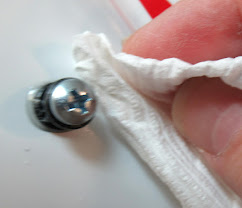All the parts for the clone build are shown above.
The BT-20 main body tube is a BT-20B at 8.65" long.
The two BT-5 nacelle tubes, BT-5J are 3" long.
The BT-5 engine mount tube is 2" long.
Tube lengths were found at:
Aeromoe.com/estes_body_tube_list.pdf
A Odd'l Rockets parachute will be sized to 10" diameter.
The nose cone is a BNC-20AZ from Balsa Machining Service.
I'll have to figure out how to add .25 oz. of nose weight.
The two Nacelle nose cones are BNC-5BA also from BMS.
Two LL-2AM launch lugs will be cut to .37" long.
I'm adding 1/16" diameter hear shrink to the Kevlar line tied to the engine mount.
The fin patterns were copied from Jim Z's and sized to a 3" x 9" piece of 1/16" thick balsa in Corel Draw.





















